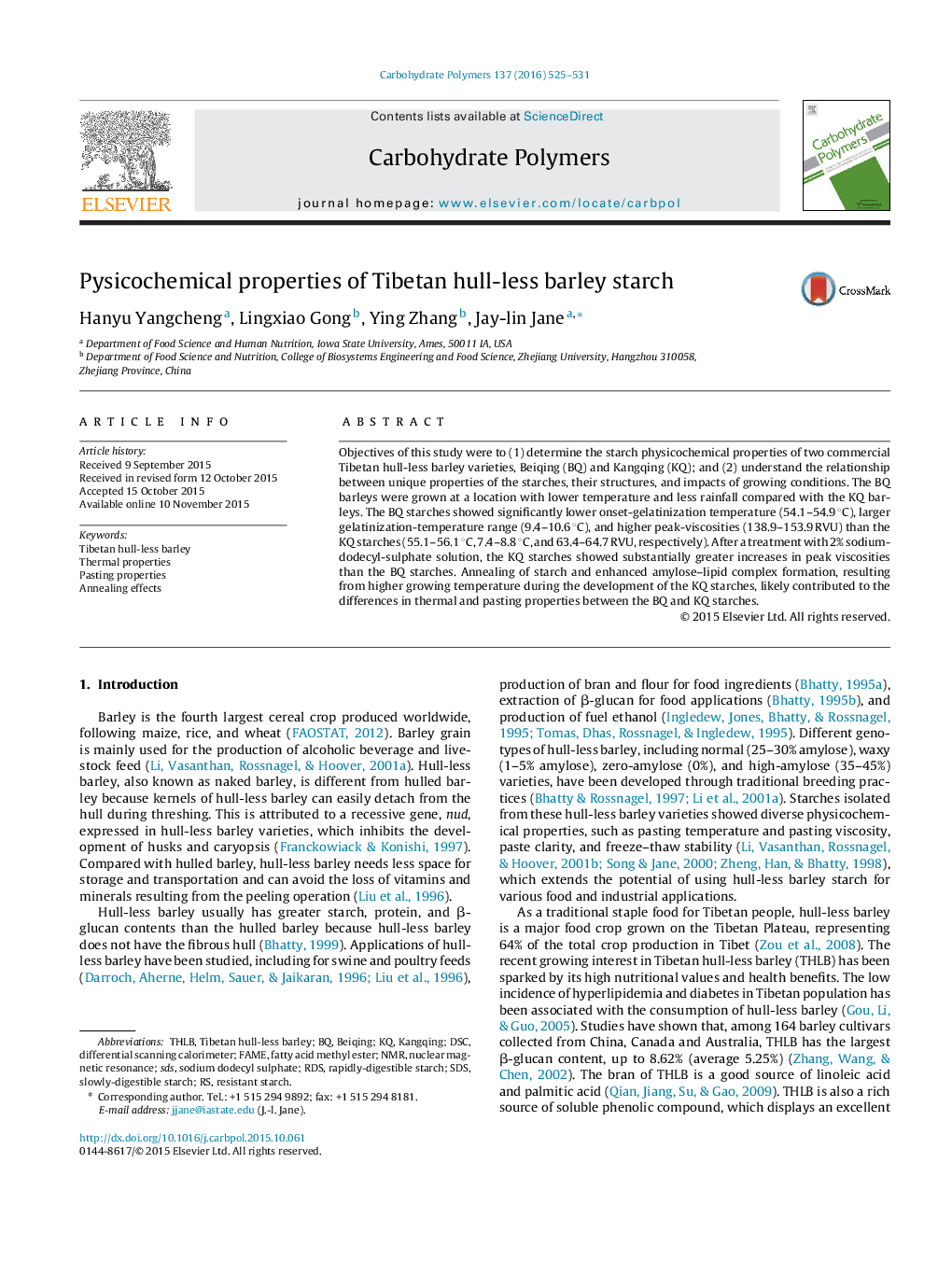| کد مقاله | کد نشریه | سال انتشار | مقاله انگلیسی | نسخه تمام متن |
|---|---|---|---|---|
| 1383194 | 1500621 | 2016 | 7 صفحه PDF | دانلود رایگان |

• Tibetan hull-less barley demonstrates great nutritional values and health benefits.
• Tibetan hull-less barley varieties had significant differences in starch properties.
• Growing conditions of Tibetan hull-less barley showed impacts on starch properties.
• High growing temperature favored annealing of starch.
• High growing temperature enhanced amylose–lipid complex formation.
Objectives of this study were to (1) determine the starch physicochemical properties of two commercial Tibetan hull-less barley varieties, Beiqing (BQ) and Kangqing (KQ); and (2) understand the relationship between unique properties of the starches, their structures, and impacts of growing conditions. The BQ barleys were grown at a location with lower temperature and less rainfall compared with the KQ barleys. The BQ starches showed significantly lower onset-gelatinization temperature (54.1–54.9 °C), larger gelatinization-temperature range (9.4–10.6 °C), and higher peak-viscosities (138.9–153.9 RVU) than the KQ starches (55.1–56.1 °C, 7.4–8.8 °C, and 63.4–64.7 RVU, respectively). After a treatment with 2% sodium-dodecyl-sulphate solution, the KQ starches showed substantially greater increases in peak viscosities than the BQ starches. Annealing of starch and enhanced amylose–lipid complex formation, resulting from higher growing temperature during the development of the KQ starches, likely contributed to the differences in thermal and pasting properties between the BQ and KQ starches.
Journal: Carbohydrate Polymers - Volume 137, 10 February 2016, Pages 525–531